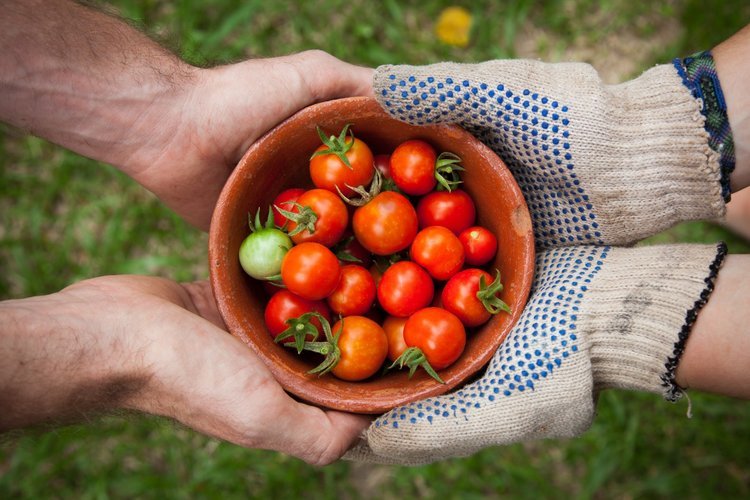Innovations in Sustainable Food & Agriculture
Experts Weigh In
As we design our 3rd “Hacking Food“ — our Sustainable Food & Agriculture Program in late July — it is important to reflect on both the need for innovation, as well as the incredible efforts underway to transform how we grow, transport, and eat food.
Why is it imperative that society transforms how we grow and consume food?
Consider these facts:
Crop and livestock production accounts for at least 10% of all U.S. Greenhouse gas emissions. (1)
821 million people worldwide are chronically undernourished. (2)
Exposure to pesticides is linked to increased incidence of Alzheimer’s disease, cancer, birth defects and asthma, Parkinson’s, sterility and learning disorders. (3)
According to the FDA, approximately 70 percent of all antibiotics used in the United States are fed to farm animals. (4)
In the U.S., unhealthy diets contribute to 678,000 deaths each year. (5)
Obesity costs The U.S. Healthcare system $147 Billion each year, and Diabetes costs $116 Billion. (6)
Factory farms raise 99.9% of chickens, 99% of turkeys, 95% of pigs, and 78% of cattle currently sold in the United States. (7)
The International Agency for Research on Cancer has classified processed meats — including ham, salami, sausages and hot dogs — as a carcinogen and red meat as a probable carcinogen. (8)
43 percent of salmon sold in the U.S is mislabeled; it’s not actually salmon, but some other kind of fish, dyed pink to look like salmon. (9)
Each year 1.3 billion tons of food is wasted globally. (10)
Over 70% of US farmers generate only a quarter of their income from agriculture, meaning many must work multiple off-farm jobs in order to make ends meet. (11)
Daunting, yes.
These issues reflected in the statistics are incredibly complex, in many cases the problems worsening. Sit home and cry? I have tried that, it doesn’t really work.
Well, is there anything to be excited about? Actually, yes!
I asked some of the experts what organizations they are most excited about:
“I’m very impressed with the work Pinnacle Organics is doing to build up soil health through a combination of soil-building crops, complex crop rotations, composting, and minimizing tillage in their organic produce fields in Northern California. This approach to farming is so important in the face of climate change: healthy soils are more resilient to extreme weather and can also soak up carbon from the atmosphere.”
— Liz Carlisle, Lecturer Stanford University
“The most innovative thing I’ve seen recently is Griffith Foods, a 100 year old ingredient and product development company, deciding to put their investment capital, R&D resources and sales team behind promoting sustainable ingredients like Regrained upcycled flour, green banana flour and moringa.”
— Lisa Curtis, CEO, Kuli Kuli
“I love the work of the Fibershed Marketplace. Their innovation is that they don’t silo food systems from fiber systems and thus are raising consumer awareness around the reality that healthy food can only be produced from healthy, regenerative ecosystems — the same ecosystems where our fibers and clothing can be grown.” — Erin Axelrod, Partner/Worker-Owner, LIFT Economy
“The availability and taste of sustainably created foods has changed dramatically over the years. Consumers can find healthy and tasty food in places they never could previously.”
— Charlie Ayers, Restaurateur, Author Food 2.0
“One of the most innovative companies we’ve seen recently is Apeel Sciences. The team have figured out how to convert normal organic plant material into an extra, natural “skin” that can dramatically extend the life of almost any produce. Through this, Apeel can improve access to global markets for farmers across the world, deliver better produce to consumers and dramatically reduce food waste, water use and CO2 emissions.” — Kevin Boylan, Managing Partner, PowerPlant Ventures
“REBBL with a cause! A nonprofit with a mission to end human trafficking (Not For Sale) created a healthy drink company sourcing from the indigenous communities of the Amazon with the thesis that when people have economic opportunity, they are less vulnerable to exploitation.” — Gagan Levy, CEO, Guru
“Down to Cook has created a plant-based protein base that can be combined with any vegetable to make a center-of-the plate patty, meatball or other form of food. I think it’s a great solution for consumers looking to add more plant-based eating to their diets.” — Kirsten Saenz Tobey, co-founder and chief impact officer, Revolution Foods
“I’m particularly excited about Giuseppe Scionti’s efforts at Nova Meat to leverage his deep understanding of tissue engineering and bioprinting technology to develop new plant-based meat products.”
— Dan Altschuler, Managing Partner, Unovis Partners & New Crop Capital
“I love how SafeTraces is using invisible, edible, DNA-based “barcodes” to improve traceability in the food supply chain. The technology enables a range of solutions for more rapidly responding to food safety incidents, detecting counterfeiting or adulteration, and ensuring accountability for sustainable growing practices.” — Rob Veres, Partner Spero Ventures
These organizations are just a small sampling of a much larger pool of highly innovative products and businesses ready to launch. Creativity in the sustainable food & agriculture field is robust. We see innovation coming from food entrepreneurs young and old, from traditional backgrounds as well as from outside of traditional agriculture.
It will take a broad based effort to change the way we grow and consume food; the “raw ingredients” in the form of market demand, ecosystem of entrepreneurs and investors, and profitable business models are there for us make this change.
ENDNOTES:
(1) https://www.epa.gov/ghgemissions/sources-greenhouse-gas-emissions
(2) http://www.fao.org/state-of-food-security-nutrition/en/
(3) “Wide Range of Diseases Linked to Pesticides,” Pesticides and You 30, no. 2 (2010): 13–21.
(4) https://www.nytimes.com/2014/10/03/science/antibiotics-in-livestock-fda-finds-use-is-rising.html
(5) Center for Science in the Public Interest, “Why Good Nutrition Is Important.” http:cspinet.org
(6) M. Pollan, “Big Food vs. Big Insurance,” New York Times, 9 September 2009
(7) https://www.huffpost.com/entry/its-time-to-end-factory-f_b_1018840?guccounter=1
(8) https://www.cancer.org/latest-news/world-health-organization-says-processed-meat-causes-cancer.html
(9) https://usa.oceana.org/publications/reports/oceana-reveals-mislabeling-americas-favorite-fish-salmon
(11) https://www.elementascience.org/articles/10.1525/elementa.356/

